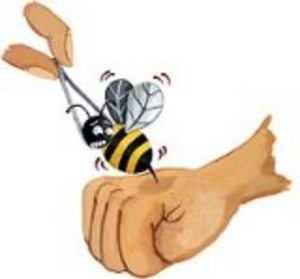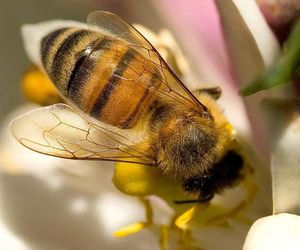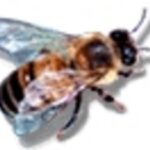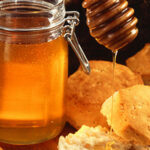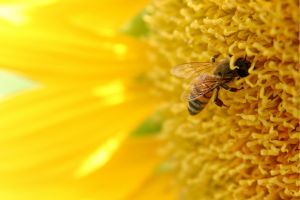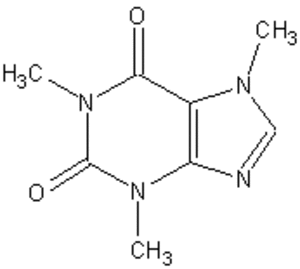The weather is turning warmer and spring is breaking out in many areas of the country. As the flowers begin to bloom, and those flowers need to be pollinated, bees will also begin making their appearance around your deck or garden. Do you know what to do if your child gets a bee sting this season?
The first and most important thing to do when your child is stung by a bee, is to determine whether or not he begins to have an allergic reaction. In both children and adults, bee stings can be fatal if there is an allergy. If your child exhibits any of the following symptoms after being stung, seek immediate medical attention:
-Swelling over a large area of the body
-Shortness of breath or difficulty breathing
-Tightness in throat or chest
-Dizziness
-Hives
-Fainting
-Nausea or vomiting
-Pain and swelling for more than 72 hours
If your child receives a bee sting this summer and it is obvious that he is not experiencing an allergic reaction, there are several steps you can take to relieve the pain and discomfort caused by the sting.
First, you must remove the stinger. The stinger left by a bee contains a venom sac-not something you’d like to leave under your child’s skin. However, since using a tweezer to remove the stinger would rupture the sac, it is best to use a blunt object to remove it. Try using a credit card or fingernail to brush the stinger out of the skin.
Secondly, clean the wound. Soap and water works fine for this, or you can use some hydrogen peroxide.
From here, you have several options for how to relieve pain from the sting:
1. Put a slice of raw onion or raw potato on the wound for 30 minutes.
2. Ice the area.
3. Apply a paste of meat tenderizer and water to the area for 30 minutes and no more. Meat tenderizer effectively removes venom, but can also be hard on a child’s delicate skin.
4. Make a paste of baking soda and water to apply to the sting.
5. Mix apple cider vinegar and baking soda to apply as a paste.
6. Apply straight lemon juice: This will sting at first, but then feel much better.
7. If you have nothing on hand, smearing mud on the bitten area will effectively draw out venom.
8. A wet black tea bag laid on the wound will act as a poultice.
9. Benadryl and Children’s Tylenol will help reduce pain.
Spring is here and if you keep any flowers around your house, you are about to come into contact with bees. If you or anyone in your family experiences a sting, first make sure that an allergic reaction is not being suffered. Then, remove the stinger and apply a cold compress or paste mixture to help reduce pain and tenderness.
